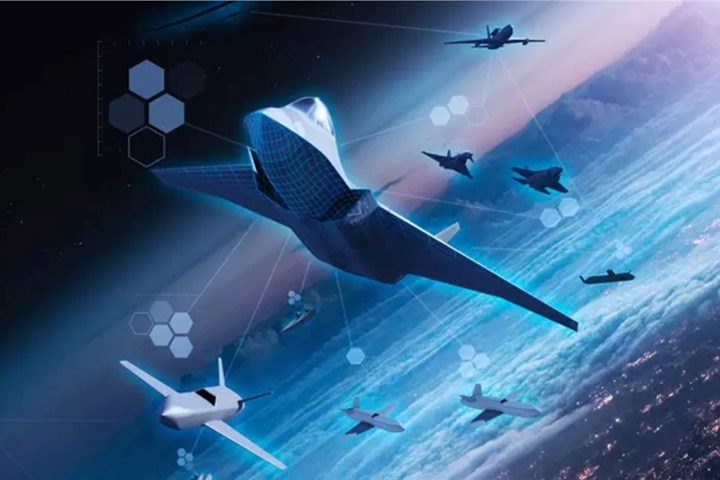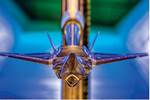Team Tempest combat air demonstrator set to fly
Plans have been confirmed for the development of the U.K. Tempest demonstrator, a project involving novel technologies R&D for next-gen skills, tools and processes, including composites.

Photo Credit: Team Tempest
The U.K. Secretary of State for Defence, Ben Wallace MP, has confirmed plans for Britain to lead the development of a new flying combat air demonstrator, which is said will play a critical role in proving the technology and design principles needed to deliver the region’s Future Combat Air System, Tempest.
Launched in 2018, the flagship project is part of a suite of novel technologies being developed by Team Tempest, involving a number of suppliers — led by BAE Systems (Farnborough) — and the Ministry of Defence. These concepts are designed to demonstrate and test the next generation combat air skills, tools, processes and techniques needed to ensure Tempest achieves in-service in 2035. The project, for example, is developing composite materials and additive manufacturing (AM) to produce lightweight, power-dense configurations capable of operating at higher temperatures.
Engineers at BAE Systems across the North of England are leading the design, test, evaluation and build process, bringing together new and novel digital engineering technologies such as synthetic modeling and model-based systems engineering. These innovative design and engineering methods are helping to demonstrate how they will significantly reduce the time it takes to design, deliver and upgrade complex combat aircraft, according to the company. Team Tempest says the demonstrator aircraft will fly within the next five years.
“I am delighted that the U.K., alongside Italy and Japan, are working on similar combat air journeys together,” Wallace says. “Our work with Japan and Italy on cutting-edge technology like this shows the benefit of our alliances across the world. The design and development of the demonstrator aircraft represents an important milestone, showcasing the success and talent of our engineers, programmers and software developers. This program will go on to attract opportunities for many more great minds and talent from across the UK.”
The demonstrator will provide evidence for the critical technologies, methods and tools, which will be used on the core platform. As part of the broader activity involved in developing Tempest, the demonstrator program is also helping to retain, and further develop and stimulate the next generation of skills and expertise required to deliver it.
Related Content
-
Industrializing additive manufacturing in the defense/aerospace sector
GA-ASI demonstrates a path forward for the use of additive technologies for composite tooling, flight-qualified parts.
-
Plant tour: Renegade Materials Corp., Miamisburg, Ohio, U.S.
Renegade Materials is known for high-performance prepregs for aerospace applications. Following its acquisition by Teijin in 2019, the company has expanded capacity and R&D efforts on a range of aerospace-targeted materials.
-
From the CW Archives: Airbus A400M cargo door
The inaugural CW From the Archives revisits Sara Black’s 2007 story on out-of-autoclave infusion used to fabricate the massive composite upper cargo door for the Airbus A400M military airlifter.
















